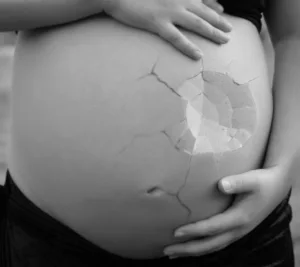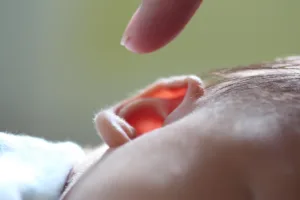
You recently gave birth. It’s a thrilling period filled with fresh experiences.
Additionally, breastfeeding or chestfeeding can be one of the most intimate times you and your child spend together. Along with strengthening your relationship, you’re giving your child essential nutrients for healthy growth and development.
However, there is no one-size-fits-all approach to breastfeeding. The breastfeeding positions that are most comfortable for both you and your baby are the ideal ones.
Certified baby care experts explain why it’s important to have a few different breastfeeding positions in your routine.
In this article, I will discuss the top 10 best breastfeeding positions that I have experienced in my research.
Table of Contents
Posiotioning and Attachment
How you hold your baby at your breast to allow them to eat is referred to as positioning and attachment. ‘Latching on’ is another term for attachment.
The most crucial factor in a successful breastfeeding experience is proper placement and bonding. Your baby will feed more easily if they are securely attached and in the proper position.
As you grow used to your baby connecting to your nipple, you could experience nipple discomfort or sensitivity at the start of a feed in the early days of breastfeeding. However, it shouldn’t hurt.
How to Attach Your Baby
Attaching your baby can be done in two ways:
- baby-led approach
- mother-led approach
Baby-led Approach
Your baby can latch on using their innate inclination when you follow the baby-led technique.
How to go about it:
- Unwind in the relaxed posture.
- Lay your baby tummy-down on top of you, with easy access to the nipple.
- Allow them to locate your breast and cling to it independently.
Mother-led Approach
You can help your baby attach more actively if you find that the baby-led method is ineffective. We refer to this as the mother-led approach.

Your baby will latch better if you follow these steps:
- Your baby’s nose should be level with your nipple as you hold them close.
- Your baby’s mouth should open wider if you allow their head to tilt back so their upper lip touches your nipple.
- Bring your baby to your breast once their mouth is open.
- Aim for the roof of their mouth with your nipple.
- Your nipple and the majority of the areola (the area around your nipple), or region surrounding your nipple, should be deep in your baby’s mouth when they attach.
- Your baby’s chin will press against your breast when they are securely attached.
- For your kid to breathe easily, their nose should be clear. When properly affixed, the nose should ideally be tilted.
- Babies breathe through their noses. They will leave the breast if they are unable to breathe freely.
- Your baby will be able to breathe, swallow, and suck comfortably in the proper position.
- Your kid will eat better, and you will feel more at ease if you have a deeper relationship.
- Above their upper lip, more of your areola will be seen than beneath it.
- They will be heard swallowing.
- They will first suck rapidly, then more slowly.
Breastfeeding Positions
Choose a position that is comfortable for you before you begin breastfeeding. This requires practice, just like learning a new skill. There aren’t many guidelines, but when you search for breastfeeding positions, it’s crucial that you and your child are both comfortable, whether sitting or lying down.
Discover the top 10 different breastfeeding positions and find out what is best for you and your baby:
- Laid-back breastfeeding position
- Cradle hold
- Cross-cradle-hold
- Football hold
- Side-lying position
- Upright breastfeeding or koala hold
- Rugby-ball hold
- Dangle feeding
- Double-rugby ball hold
- Dancer hand breastfeeding position
Whatever position you decide to use for breastfeeding, keep in mind:
- Before you begin feeding, gather everything you’ll need, including a drink, some nibbles, your phone, TV remote, book, or magazine. You might not be able to get back up for a while, so remember to have a pee first!
- Ensure your baby is comfortable. Your kid should be supported and steady in any position you choose, and his head, neck, and spine shouldn’t be twisted.
- Make sure you’re comfortable and at ease as well. If necessary, support your arms or back with pillows, cushions, or rolled towels.
- Verify that your baby is latching on properly. For nursing to be comfortable, a proper latch is essential.
Try the following breastfeeding positions to see which works best for you and your baby.
Breastfeeding Positions in Detail
Laid-back Breastfeeding
Laid-back is one of the fantastic breastfeeding positions. Mothers frequently attempt the relaxed nursing posture, commonly referred to as biological nurturing. Known as the “breast crawl,” your baby will naturally go toward one of your breasts and try to latch on if they are placed on your chest or stomach as soon as they are born.
While gravity helps your baby latch on and stay in position, skin-to-skin touch helps encourage feeding impulses.

But laid-back breastfeeding isn’t limited to newborns; it can benefit babies of all ages. If you have a forceful letdown, your breasts are huge, your baby has trouble latching in other holds, or they dislike having their head touched while they feed, it might be very helpful.
Laid-back breastfeeding is a great position to try if you are having difficulties with breastfeeding.
Here are a few tips to help you make your technique easy:
- Your pelvis must move in order to enter this position. To get into a semi-reclining position in a chair or bed, move your hips forward. Your baby will bond with your body seamlessly if you lay them down on your semi-reclined body.
- With their stomach down and their cheek lying close to your breast, place your baby on top of you.
- Give your baby permission to self-attach. They will locate and affix themselves to the breast. Your baby can also be guided or assisted in attaching.
- You can support your infant on top of your body by using your arms as guardrails.
Important note
Never fall asleep with your baby on a sofa or armchair, as this increases the risk of sudden infant death syndrome.
Cradle hold
When most of us think of breastfeeding, this is the traditional position. It entails you sitting up straight, your infant on his side, his body on your stomach in a tummy-to-mummy posture, and his head and neck resting along your forearm. Despite being a highly common posture, it can be challenging when dealing with a newborn because it doesn’t provide as much support as other holds.

Since it allows you the most control, the cradle hold is the most popular posture.
Be upright to begin. On the side you’ll be nursing, place your infant across your chest so their head rests in the nook of your elbow. Put your hand on your baby’s upper back to gently push them closer to your body while using your other arm to hold the remainder of their body.
Cross-cradle hold
Although your arms take on different functions, your baby’s torso rests along the opposite forearm in what appears to be a similar position to the cradle hold. Supporting your infant around the neck and shoulders will enable them to tilt their head before latching. In addition to being an excellent breastfeeding position for newborns, this posture is also beneficial for petite babies and those who have trouble latching. You have more control over your baby’s positioning because they are fully supported on your opposing arm, and you can shape your breast with your free hand.

Football hold
The clutch hold or underarm hold are other names for the football hold breastfeeding position. Place your baby next to you with your elbow bent, facing them toward your breast. The body of your unborn child will lie on your forearm. Be sure to support your baby’s head with your hand. If necessary, you can support your breast with your free hand.

If you have larger breasts or wish to keep your baby’s weight off a cesarean incision, this hold frequently works well as well.
Additionally, you’ll need a cushion or other support for this pose.
Side-lying position
Side-lying position can be more pleasant than sitting if you’ve had stitches or a caesarean section, and it’s perfect for comfortable nighttime feedings and nursing in bed or on the couch. It is necessary for you and your baby to lie side by side, belly to belly.
Because it slows down the milk flow, this is frequently a beneficial posture if you have a heavy milk letdown or an excess of milk.
Breastfeeding positions like side-lying have been criticized for potentially causing ear infections. However, Costa believes additional research is necessary, even though some studies suggest that standing up straight helps prevent ear infections.

Upright breastfeeding or koala hold
When feeding in the upright breastfeeding or koala hold, your baby sits on your hip or straddling your thigh, head and spine straight. If you give your newborn lots of support, you can do this hold with them. It’s also a handy approach to feeding an older baby who can sit on their own.
For kids with reflux or ear infections, who often like to be upright, the upright or koala hold is frequently one of the most pleasant breastfeeding positions. It can also be effective with newborns who have low muscular tone or a tongue knot.

Rugby-ball hold
You sit with your baby lying upon your forearm in this posture, which is sometimes referred to as the clutch or underarm. With their feet facing the back of the chair or whatever you’re sitting on, their body tucks in beside you.
Because it gives you plenty of control and a nice view of your baby’s face, this is another useful early breastfeeding position. Your baby will feel safer if they are nestled close to your body. This position may also appeal to mothers with larger breasts, those who have had a c-section, twins, or an early baby.

Dangle feeding
In this breastfeeding position, you crouch on all fours and place your nipple in your baby’s mouth while they are on their back.
While there is currently no scientific evidence to support this, some mothers believe that doing this for brief periods of time helps if they have conditions like mastitis and don’t want their breasts to be handled or squished.
Others assert that gravity helps unclog plugged milk ducts. Additionally, you can dangling feed while sitting, kneeling over your infant on a sofa or bed, or nearly lying down with your arms up. To avoid putting undue strain on your shoulders and back, you might need to support yourself using pillows and cushions.

Double-rugby ball hold
The double clutch, sometimes referred to as the double rugby ball hold, is an excellent breastfeeding position for twins because it allows you to feed them simultaneously while keeping your hands largely free.
When feeding like this, especially in the early days, you’ll most likely need to use a specifically made twin breastfeeding cushion. This reduces pressure on your abdomen if you have a c-section and provides additional support to help place both infants.
Additionally, you could discover that you can care for one kid without interfering with the other’s feeding if you have more free hands.

Additional breastfeeding positions for twins include double laid-back or double upright breastfeeding positions, one twin in a rugby ball hold and one in a cradle hold, and two cradles crossed across one another.
Dancer hand breastfeeding position
Try this Dancer hand breastfeeding position to support both your baby’s head and your breast if they have low muscular tone or have trouble staying latching on, possibly due to an early birth, Down syndrome, or another sickness or handicap.
With your thumb on one side and your fingers on the other, begin by cupping your breast with your palm below. Then, right in front of the breast, edge your hand forward until your thumb and index finger make a U. Your three remaining fingers should still be supporting the
breast underneath.

As your baby feeds, place their jaw on your thumb and index finger, keeping their chin at the bottom of the “U” and your thumb and index finger gently holding one cheek and the other cheek, respectively. In addition to giving you excellent visibility of the latch, this hold allows you to manage your baby’s posture and provides ample support.
How to know your baby is attached correctly
Signs that your baby is attached correctly:
- There should be a large amount of breast in your baby’s mouth.
- Their chin should touch your breast.
- Their top and bottom lips are curved out, as you can see.
- When your baby sucks, you shouldn’t see dimpling on their cheeks; instead, they should be round and full.
- As they eat, you could notice their jaw moving and their ears twitching.
- Their initial sucks will be quick and short, followed by deep, prolonged sucks with breathing pauses.
Don’t do
1. Do not cover or restrain your baby’s hands.
2. Do not touch the back of your baby’s head – this can cause them to push back.
3. Do not push your baby onto your breast during latching if you can avoid it.
4. Do not check your baby’s lips after latching – this will pull your breast out of their mouth.
Breastfeeding Tips
Breastfeeding presents challenges for many new parents.
The largest piece of advice? “Remember to breathe,” Costa advises. “You want to ensure that both you and your infant remain composed.”
Frequently asked questions
Are there wrong breastfeeding positions for my newborn?
Additionally, if you have a strong letdown or oversupply or your baby has reflux, some positions are recommended over other positions.


































5 thoughts on “10 Best Breastfeeding Positions For All New Mothers”